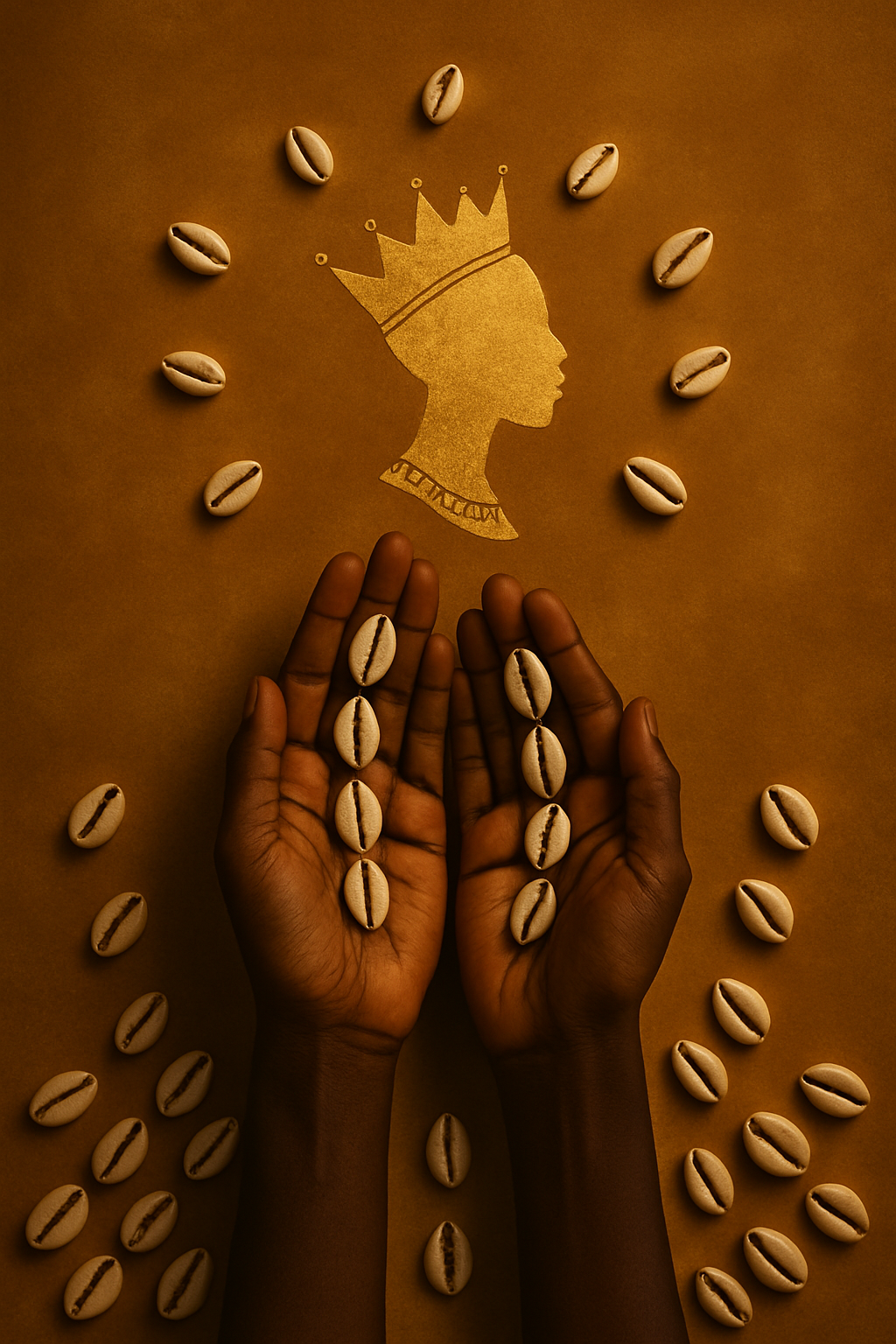
Unveiling the Rich Tapestry of Cowrie Shells: A Journey through African History
Share

Dive into the captivating tale of cowrie shells in Africa, where these small yet intricate treasures have woven themselves into the very fabric of the continent’s history. From the bustling markets of West Africa to the serene shores of East Africa, cowrie shells have left an indelible mark on African societies for centuries.
1. Origins and Spread
The story of cowrie shells begins in the Indian Ocean, where they were naturally abundant along the coastlines of the Maldives and Sri Lanka. With the expansion of maritime trade routes, these shells found their way to the shores of Africa, where they quickly gained prominence as a form of currency.
2. Currency and Trade
Cowrie shells became a symbol of prosperity and trade across Africa, serving as a widely accepted form of currency. In West Africa, they were particularly esteemed, used in transactions ranging from everyday purchases to royal tributes. The shells facilitated economic exchange, shaping the development of ancient economies and fostering trade routes that spanned continents.
3. Cultural Significance
Beyond their role as currency, cowrie shells held deep cultural and spiritual importance in African societies. They adorned ceremonial attire, symbolizing wealth, fertility, and status. From birth rituals to marriage ceremonies, cowrie shells were incorporated into various cultural practices, enriching the tapestry of African traditions.
4. Regional Variations
While cowrie shells were ubiquitous across Africa, their significance varied from region to region. In West Africa, they were often strung together to create elaborate jewelry worn by royalty and nobility. In East Africa, they played a vital role in trade networks, connecting distant lands and cultures.
5. Decline and Legacy
The colonial era brought about significant changes to Africa’s economic and social landscape, including the decline of cowrie shells as currency. With the imposition of colonial currencies and the disruption of traditional trade networks, their use waned. However, their cultural legacy endures, serving as a reminder of Africa’s rich history of innovation, commerce, and spiritual tradition.
Conclusion
The story of cowrie shells in Africa is a testament to the continent’s enduring resilience and cultural diversity. From their origins in the Indian Ocean to their widespread use across Africa, these small treasures have played a significant role in shaping African societies and economies. As we reflect on their history, we are reminded of the intricate connections between past and present, and the enduring legacy of Africa’s vibrant cultural heritage.
1. Origins and Spread
The story of cowrie shells begins in the Indian Ocean, where they were naturally abundant along the coastlines of the Maldives and Sri Lanka. With the expansion of maritime trade routes, these shells found their way to the shores of Africa, where they quickly gained prominence as a form of currency.
2. Currency and Trade
Cowrie shells became a symbol of prosperity and trade across Africa, serving as a widely accepted form of currency. In West Africa, they were particularly esteemed, used in transactions ranging from everyday purchases to royal tributes. The shells facilitated economic exchange, shaping the development of ancient economies and fostering trade routes that spanned continents.
3. Cultural Significance
Beyond their role as currency, cowrie shells held deep cultural and spiritual importance in African societies. They adorned ceremonial attire, symbolizing wealth, fertility, and status. From birth rituals to marriage ceremonies, cowrie shells were incorporated into various cultural practices, enriching the tapestry of African traditions.
4. Regional Variations
While cowrie shells were ubiquitous across Africa, their significance varied from region to region. In West Africa, they were often strung together to create elaborate jewelry worn by royalty and nobility. In East Africa, they played a vital role in trade networks, connecting distant lands and cultures.
5. Decline and Legacy
The colonial era brought about significant changes to Africa’s economic and social landscape, including the decline of cowrie shells as currency. With the imposition of colonial currencies and the disruption of traditional trade networks, their use waned. However, their cultural legacy endures, serving as a reminder of Africa’s rich history of innovation, commerce, and spiritual tradition.
Conclusion
The story of cowrie shells in Africa is a testament to the continent’s enduring resilience and cultural diversity. From their origins in the Indian Ocean to their widespread use across Africa, these small treasures have played a significant role in shaping African societies and economies. As we reflect on their history, we are reminded of the intricate connections between past and present, and the enduring legacy of Africa’s vibrant cultural heritage.














